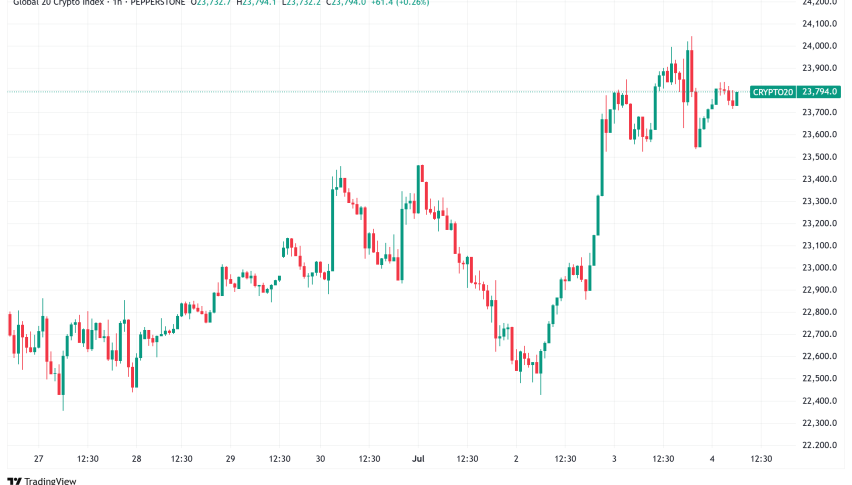Forex Signals Brief May 17: Chinese Data Closes the Week
The day from now one will likely be quiet in forex, with the economic data being light in the European and the US sessions.

Yesterday started with the Prelim Q1 GDP numbers from Japan which showed a -0.5% contraction, sending the JPY down and USD/JPY around 200 pips higher after the 3 cent retreat post the soft US CPI inflation report earlier this week. The employment report from Australia was mixed, with the unemployment rate jumping 3 points higher to 4.1% while employment change came above expectations, which left the Aussie trading in a range throughout the day.

In the European session the economic calendar was light, but in the the North American session we received a round of data from the US. The Unemployment Claims slowed down after the jump in the previous week, falling to 222K from 235K previously, which calmed some fears about the US labour market after the soft NFP last Friday.
However, concerns emerged in bond and forex markets as rates increased, particularly in the front end of the yield curve, and the US dollar gained strength, consolidating after the fall on Wednesday. Despite some soft data, the market seems reluctant to dismiss the possibility of strong US inflation. This sentiment may have been influenced by hot import/export prices and concerns about pipeline inflation.
Policymakers’ emphasis on a “higher-for-longer” posture may have weighed on market sentiment, prompting questions about whether expectations for rate cuts this year are too aggressive. Despite other factors, initial unemployment claims remain at historically low levels, suggesting ongoing strength in the labor market. The USD/JPY currency pair has recovered well from yesterday’s lows, gaining about 53 pips today and recouping more than half of the losses prompted by the CPI data.
Today’s Market Expectations
Today the economic data was reserved for the Asian session, with the PPI inflation report from New Zealand and a round of data from China. The PPI inflation report from New Zealand indicate that both output and input prices in New Zealand experienced moderate increases during the first quarter of the year. The output prices for the first quarter increased by 0.9% compared to the previous quarter. This growth exceeded expectations, as analysts had anticipated a 0.5% increase. The previous quarter, Q4, recorded a 0.7% increase in output prices.
Yesterday USD buyers put up a fight after the dump on the CPI report. We tried the upside in the USD, buying it against a number of major currencies as well as selling Gold (XAU/USD). We opened 5 trading signals in total yesterday, closing the day with four winning forex signals and one losing trade.
The data from China suggested a mixed picture for the Chinese economy in April. April Industrial Output increased by 6.7% compared to the same period last year, surpassing expectations of a 5.5% growth rate. This marks a significant acceleration from the 4.5% growth recorded in March.
April Retail Sales saw a growth of 2.3% compared to the same period last year, falling short of expectations for a 3.8% increase. This is a slight decrease from the 3.1% growth recorded in March. Fixed asset investment for the year-to-date (YTD/Y) grew by 4.2%, missing expectations for a 4.6% growth rate. This is a slight decrease from the 4.5% growth recorded in March.
Gold Finds Any Reason to Rally
The market’s reaction to the softer-than-expected CPI data prompted investors to seek safe-haven assets like gold, driving the XAU/USD pair back towards the $2,400 level. The recovery from the $2,330 support level, which previously acted as resistance during April’s consolidation phase, suggests a bullish market sentiment. This rally in gold, coupled with the presence of the 20-period Simple Moving Average (SMA) on the H4 chart, strengthens the bullish outlook, however yesterday buyers failed to reach the $2,400 level and the price retreated lower.
XAU/USD – H1 chart
NZD/USD Faces the 200 SMA
NZD/USD exchange rate showed signs of upward momentum in April, indicating strength in the New Zealand dollar relative to the US dollar. This upward trend coincided with a decline in the value of the US dollar, possibly influenced by disappointing economic statistics from the United States. Last week, the price of NZD/USD stabilized around the 50-day Simple Moving Average (SMA), which acted as a support level during the consolidation phase. However, this week, buyers resumed their advance, pushing the price towards the 200-day SMA, which has historically served as resistance on the daily chart. As the price approached the 200-day SMA, depicted by the purple line on the chart, it encountered resistance and withdrew. This indicates that the 200-day SMA continues to exert influence on the price movement, confirming its significance as a key technical level to watch.
NZD/USD – Daily Chart
Cryptocurrency Update
Bitcoin Consolidates Above the 50 Daily SMA After the Jump
Bitcoin has been exhibiting a pattern of lower highs since March, suggesting a potential shift into a downtrend or consolidation phase, but after the jump this week, the pattern seems broken. The recent drop in the price of Bitcoin to around $61,000 has created a buying opportunity for investors looking to enter the market which we did. Technical indicators, such as the 50-day and 20-day Simple Moving Averages (SMAs), have acted as resistance levels, impeding Bitcoin’s upward momentum. However, the cryptocurrency found strong support near the 100-day Simple Moving Average (SMA), represented by the green line on the chart. As a result, the cryptocurrency’s price rallied, breaking above the 50 SMA on Wednesday, but yesterday we saw a consolidation.
BTC/USD – Daily chart
Ethereum Pops Above $3,000
Ethereum (ETH) has been fluctuating, causing its price to dip below the $3,000 mark multiple times and come back up. Notably, Ethereum has fallen below its Simple Moving Averages (SMAs) on the daily chart, indicating a degree of bearish sentiment in the market. Despite these ups and downs, Ethereum has displayed resilience by consistently recovering and surpassing the $3,000 level. This resilience suggests that there is strong support available below the $3,000 level, which has helped Ethereum bounce back from downturns. Yesterday, there was another bounce off the support zone, which propelled ETH back above the $3,000 level. This demonstrates that the support zone is holding firm and that there is buying interest in Ethereum at these levels.
ETH/USD – Daily chart
- Check out our free forex signals
- Follow the top economic events on FX Leaders economic calendar
- Trade better, discover more Forex Trading Strategies
- Open a FREE Trading Account


